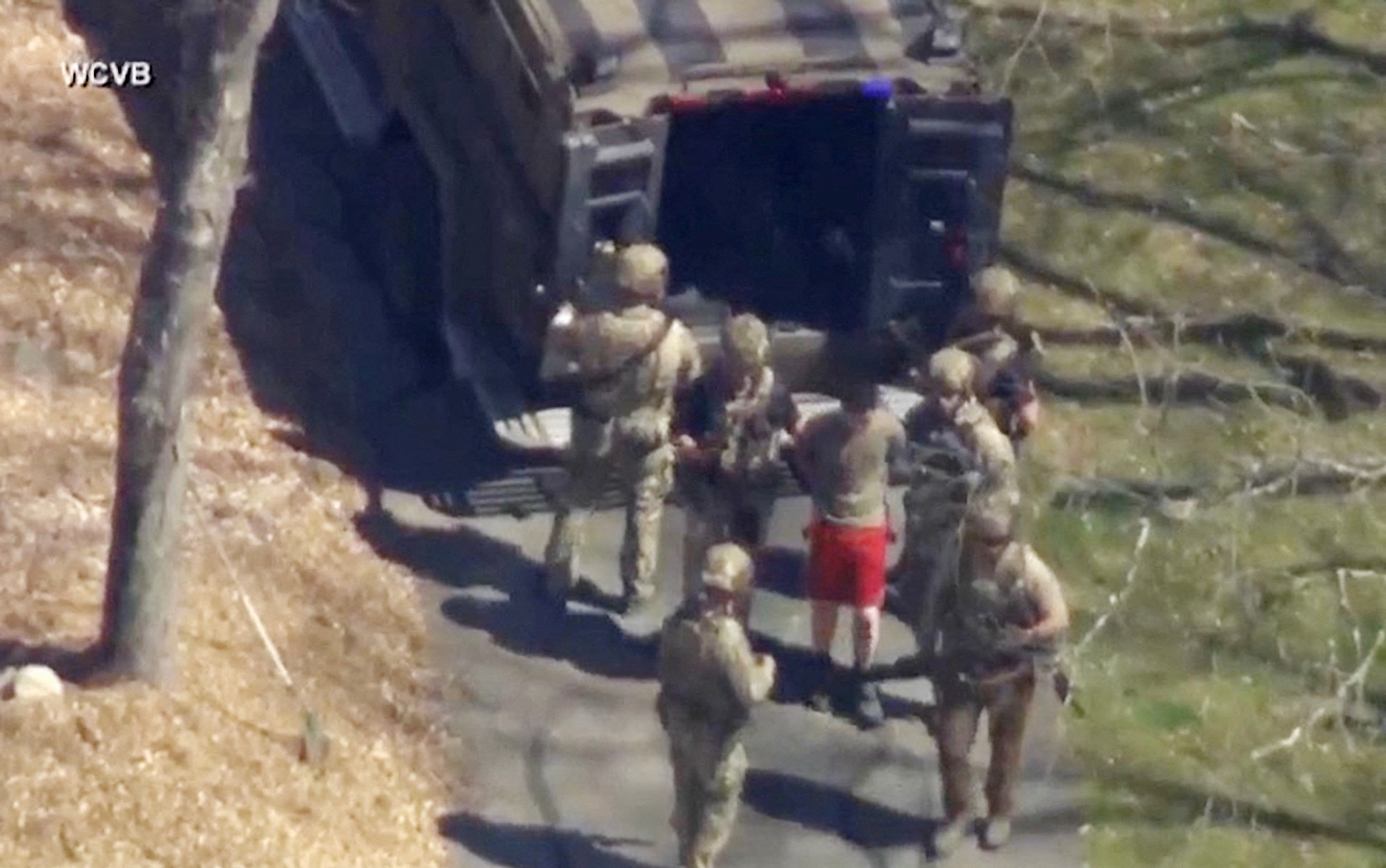Jack Teixeira, 21, a member of the Massachusetts Air National Guard, was arrested by the FBI on Thursday in connection with the leaking of classified documents that have been posted online.
John Miller, CNN’s Chief Law Enforcement and Intelligence Analyst, discussed the circumstances surrounding the investigation and the dramatic arrest outside a residence in Massachusetts.
How did the arrest on Thursday happen?
John Miller: What you saw was a very intensive investigation that has been going on since the day the Department of Defense referred this case to the Justice Department and the FBI.
When the FBI made the call to move in today, it was not their preferred plan.
They have been closing in on Teixeira for a few days. The investigation is only five days old. His father’s home and his mom’s residence were both under surveillance today while agents worked with prosecutors to ensure the evidence they had was enough for prosecutors to approve they had probable cause to make an arrest. What they wanted to do was arrest him when he went to work at the military base where he was assigned. That would have been a controlled environment. But he didn’t go to work today.
Why didn’t they want to arrest him at home?
Miller: His social media posts indicated he owned a significant number of weapons including military-style assault weapons and, of course, he has received military training in those weapons. It’s also pretty clear from stories appearing in The New York Times and The Washington Post that Jack Teixeira knew it was a matter of time before he was identified and arrested. Not knowing his mental state, going up against a trained military person in a house with weapons was not an ideal scenario. The surveillance teams were literally watching New York Times reporters showing up at the door of the house. The suspect’s name was in the Times and that was out on social media — so the FBI made the decision to move in.
What will the FBI be looking for in the house?
Miller: They are going to want any computers, phones, hard drives, thumb drives, discs, gaming systems, printers, basically anything that could store data. They are going to look for notes, writings, papers, and documents. They are going to look for other things — the hunting magazine or the nail clippers, those things that were seen on the bed where it appears the pictures of documents were taken. If the bedspread matches the one that was in the background of some of the pictures of documents, they’ll take that too.
So how was the suspect caught?
Miller: You had two fields of investigation here. One was on social media. How could you trace these documents back from Twitter to Discord to a private chatroom with a limited number of participants? That means serving Discord with orders to preserve these records so users can’t delete them. That means getting subpoenas and search warrants for the contents of that chatroom. That takes some time because you have to show probable cause. The FBI was able to convince a reluctant witness who was a member of the chat group to cooperate and that helped move this process forward
The Washington Post was able to exploit that end of the case and talk to a member of the chat group who wouldn’t name the leader who posted the documents. The New York Times published his name before he was arrested, but that’s reporting, not evidence.
The DOD, FBI and OSI, the Air Force Office of Special Investigations explored those same paths, but they also did things reporters and online gamers and sleuths couldn’t do — they pulled logs. Who looked at those documents? Who, in a classified setting, read those reports and then sent them to a classified printer that logs every document it prints with a time stamp and the computer that sent the request. The computer records the chip of the ID card and the login of the user that pulled up the document to print it. They quickly narrowed a large number of possibilities to a very small number and zeroed in on this 21-year-old airman over the last 48 hours. One of the complicating factors was, reporters did too.









